Intranet portal definition
An intranet portal is the gateway to an organization’s intranet software — a private network that only the organization’s employees or members can access. These might be the employees of a large company or the faculty and students of a university.
A corporate intranet is the hub of the organization’s internal communications and digital workplace, and an intranet portal is the entrance to that hub. It helps intranet users find and access the information and tools they need.
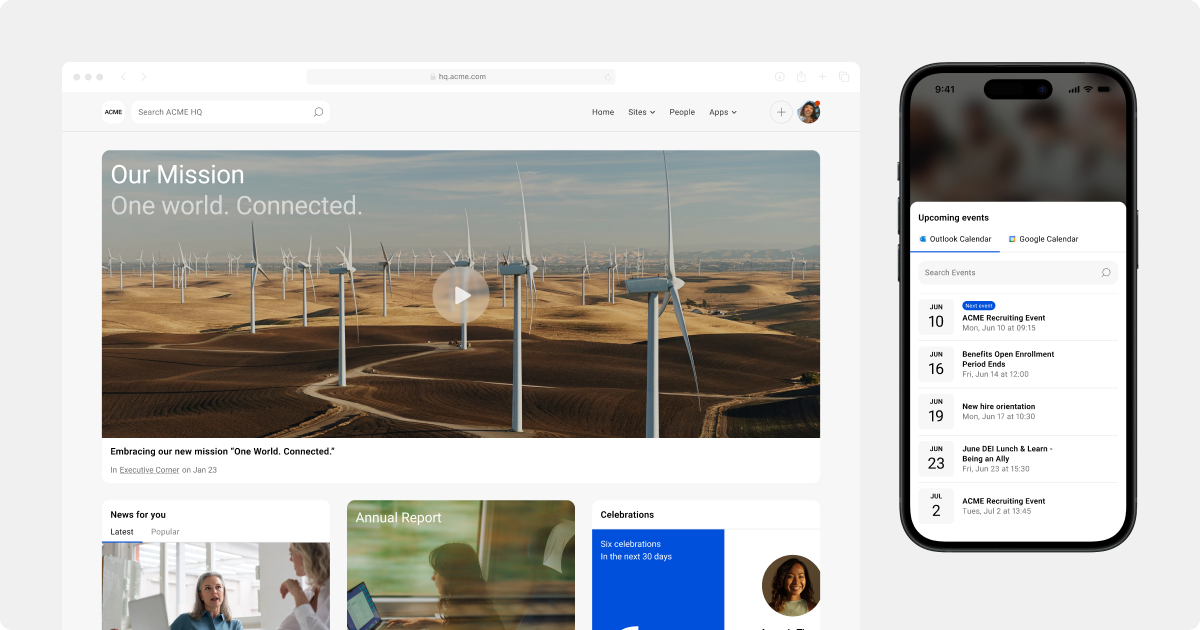
What is an intranet portal?
Companies and other large organizations use intranet software to help people communicate and work together efficiently. At its most basic, an employee intranet portal is the access point through which intranet users access the software, but it can be much more than that.
When implemented as part of a modern intranet, an intranet portal can give employees access to HR tools, communication tools, project management tools, and much more — even private AI assistants.
Online portal
An online portal is any web-based platform that provides users with a single point of access to a variety of content and services. It helps manage user communication across various sources. Online portals are widely used in different areas such as e-commerce, education, healthcare, and much more. They enhance user engagement by ensuring convenient access to necessary information. An intranet portal is one specific type of online portal.

Intranet vs. internet: What’s the difference
Both ‘intranet’ and ‘internet’ serve as means of communication and data transfer. The internet is what most people are familiar with—the global network that connects millions of computers, allowing them to share and exchange information. It’s publicly accessible to anyone with an internet connection. An intranet is a private network, accessible only to an organization’s staff. It’s used for internal communication and collaboration.
Importance of an intranet portal
An intranet portal, or employee intranet portal, plays a key role in a corporation’s internal communication structure. It creates a centralized hub where employees can access company news and policies, collaborate on projects, and connect. The role of a modern intranet portal can’t be overstated. Today’s intranet software can improve productivity, create a company culture of open communication, and contribute significantly to the growth of the organization.
The purpose of an intranet portal
The purpose of an intranet portal is multi-faceted. Its primary purpose is to improve internal communication, but that covers a lot of ground. In business, just about every success ultimately comes down to effective communication.
An intranet portal can act as a repository for important documents and company information. It can also facilitate communication and collaboration among employees, regardless of their geographical location or even their time zone. Some of the first intranet portals were little more than simple bulletin boards, but today’s modern intranets are sophisticated platforms that incorporate social networking features, document management, and even business process automation tools.
The strategic value of intranet portals
Intranet portals hold significant strategic value for any organization. Think of a modern intranet as the backbone of an efficient, well-connected workforce. By centralizing access to critical business tools and information, intranets drive productivity and improve decision-making.
The benefits of today’s intranet portals extend to fostering innovation and engagement, as well as promoting a culture of transparency and knowledge sharing. Using an intranet portal not only streamlines business processes but aligns employees toward common business objectives.
Intranet success starts with the right strategy
The successful utilization of an intranet system begins with a clear and strategic vision. It involves setting appropriate goals, planning for scalability, and fostering employee engagement from the start. By starting off on the right foot, organizations can fully leverage the potential of their intranets to enhance internal communication and productivity.
Benefits of an intranet portal
The benefits of an intranet portal are numerous. It can be a platform for internal communication, a place to document workflows, a portal for HR functions, and so on. A well-designed intranet portal can greatly contribute to the efficiency of an organization while reducing employee turnover.
An intranet portal also enhances productivity through its many tools and applications, which can be configured to fit the needs of a specific business. It’s a powerful digital tool that streamlines workflows for more efficient operations.
Efficiency and productivity
One of the key benefits of an intranet portal is the boost it gives to efficiency and productivity. Since the portal acts as a one-stop shop for all internal resources and tools, employees spend less time searching for information or navigating through different systems. This allows more time to be focused on task completion, improving the overall productivity of the organization.

Communication and collaboration
What would an intranet portal be without clear communication and collaboration features? An effective intranet portal facilitates communication by providing channels for messaging, announcements, and discussions. It enhances collaboration by providing shared workspaces, project management tools, and document-sharing capabilities. The right intranet software can break down information silos and restore a culture of knowledge-sharing and teamwork in even the most beleaguered organization.
Benefits of intranet portals for employees
For employees, intranet portals simplify work processes, increase engagement, and enhance knowledge sharing. An intranet portal can connect a team even if they’re scattered across the globe, and it can put each person’s top news, tasks, and communications front and center. When companies add an AI virtual assistant, employees can access the intranet portal simply by talking to their phone, taking intranet portals into a whole new era.
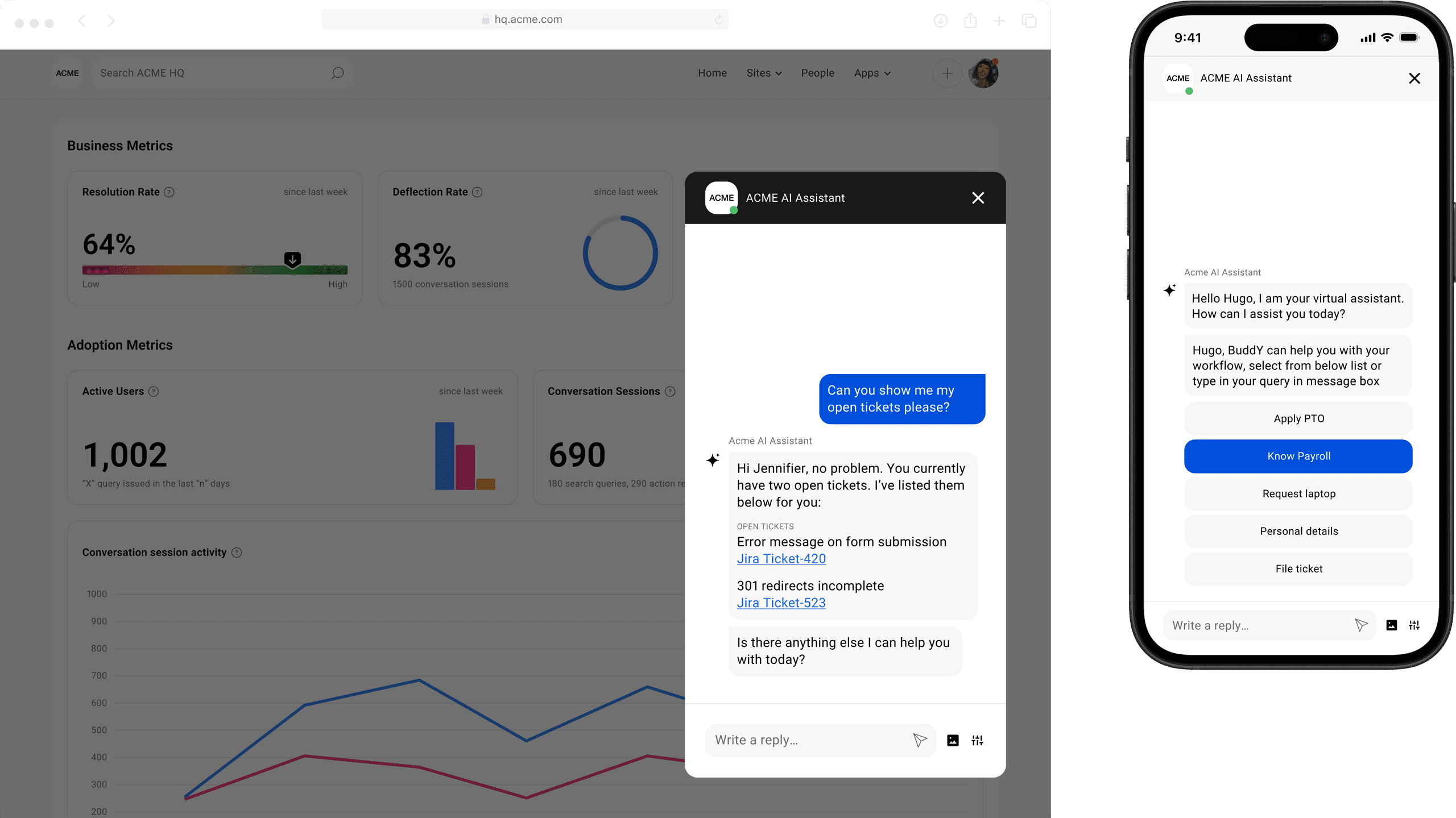
Features to consider in an intranet portal
What are the key components of an intranet portal? They map easily to the main components of an intranet itself. Let’s walk through seven of the most important intranet features one by one.
1. Customizable interfaces
An intranet portal’s effectiveness in enhancing employee productivity hinges on its user-friendly customization. Customizable interfaces let employees tailor their intranet experience to their own preferences, improving efficiency and satisfaction. These interfaces incite a sense of ownership and familiarity, making the intranet portal an intrinsic part of the daily workflow.
2. Communication tools
Communication tools within an intranet portal facilitate seamless interaction among team members. These might include chat applications, email, instant messaging, and discussion forums. Employee intranet portals facilitate swift information exchange, fostering a collaborative work environment.
3. Document management systems
Imagine a clutter-free, organized virtual workspace. Intranet portals’ document management systems provide such an environment, enabling easy upload, storage, retrieval, and sharing of documents. These systems greatly reduce time spent searching for information, making the process more efficient and productive.
4. Search functionality
In many ways, search functionality lies at the heart of intranet portals. It helps employees quickly locate and access critical information within the intranet environment. Effective search functions can save significant time, enhancing productivity and the overall user experience of the intranet portal.
5. Collaboration tools
Collaboration tools in intranet portals foster team cohesion and efficiency. By making it easier for team members to work together, an intranet enhances the company’s collective output and build a sense of unity within the enterprise.
6. Integrations
Today’s intranet portals integrate with the tools employees use every day, so they can reserve upcoming vacation time, check on their project management task lists, read the latest company news, and complete on-the-job training all in one place.

7. Mobile-first design
Cellular phones are a veritable institution of modern society. For maximum employee adoption and engagement, an intranet portal needs to be built with mobile use at the forefront, especially with so many people working remotely. With mobile intranet, employees are able to access the tools they need anytime, anywhere — whether they’re in the office, on the go, or working from home.
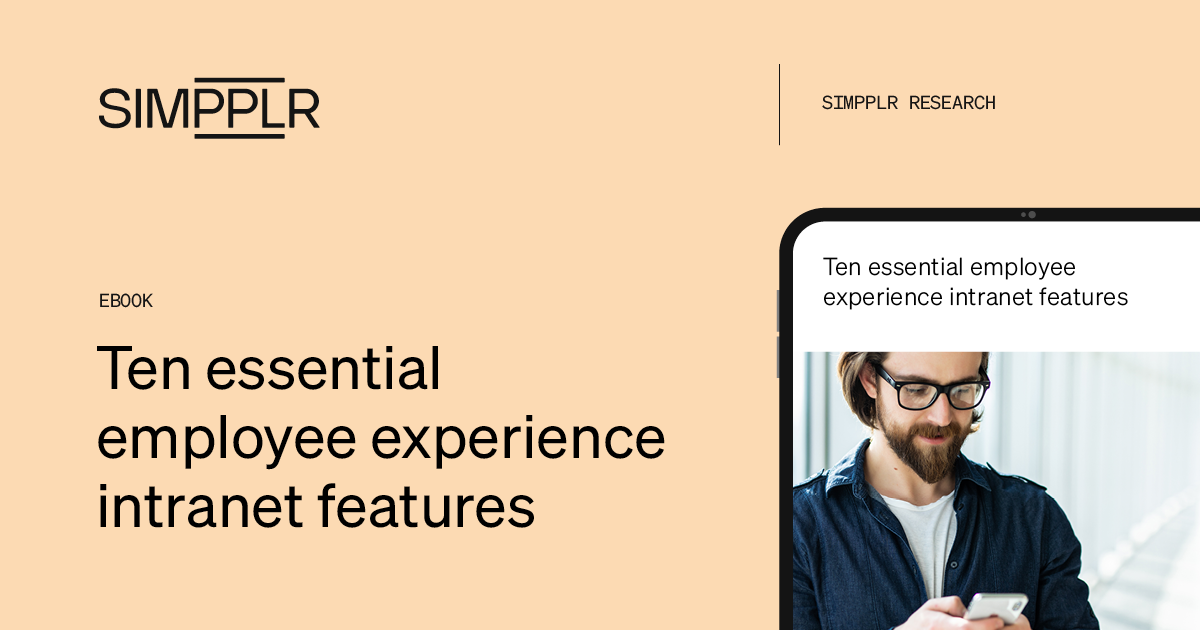
Modern intranet examples and use cases
For a lively example of intranet portals, consider a multinational company in which employees are scattered around the globe. An intranet portal can unify these employees, making them feel part of the same team with seamless collaboration. Clearly, the significance of an intranet portal in today’s digital, interconnected world is profound.
Corporate intranet portal case studies
Corporate intranet portals can drive employee engagement, shape corporate culture, and increase employee efficiency and productivity. Here are three case studies that show these benefits in action.
Case study 1: Driving engagement with an intranet portal
Consider Agero as an example of the power of employee intranet portals. Within one month of launching Simpplr’s employee recognition program in their intranet system, they saw a staggering 22x increase in content engagement. By offering employee recognition through the intranet portal, Agero was able to drive this level of employee engagement even in groups that had traditionally been quiet.

Related: Agero sparks 22x engagement with an intranet portal
Case study 2: Retaining culture through an intranet portal
While continually expanding its employee base and office locations through times of phenomenal growth, Pure Storage has successfully retained its unique corporate culture thanks to its effective use of an employee intranet portal. Of their 2,000+ employees, 75% log in weekly, engaging with a plethora of special interest groups that boost connection and help unify their corporate culture across geographical boundaries.
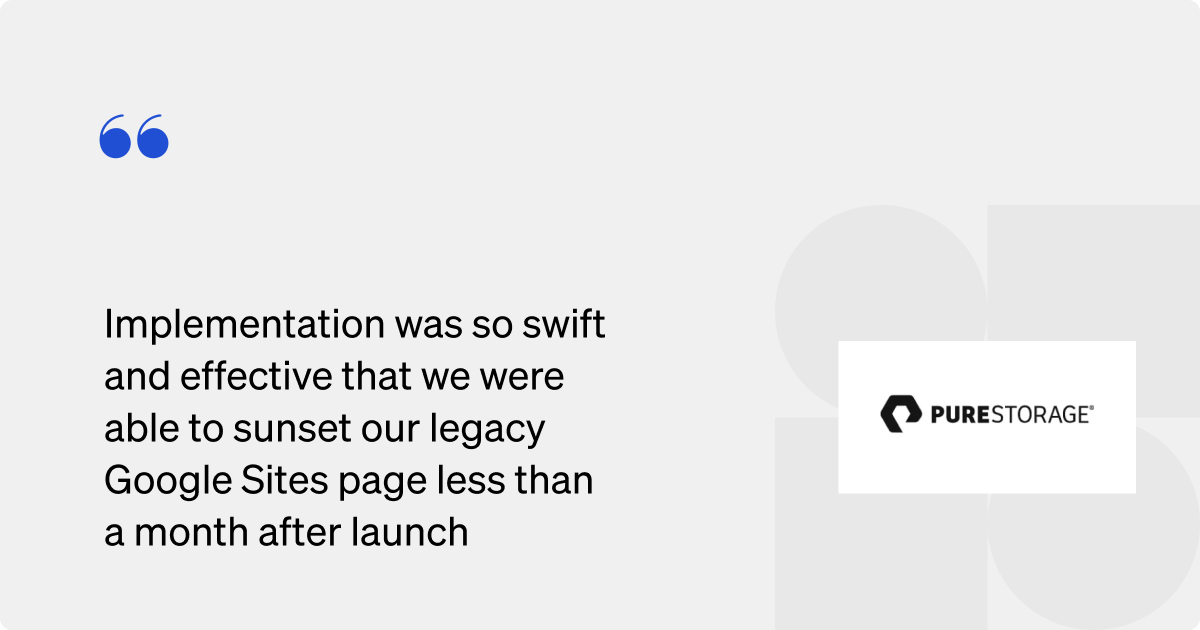
Related: Pure Storage enhances employee communications with intranet portal
Case study 3: Increasing efficiency with an intranet portal
Another striking example of the utility of intranet portals comes from Nutanix. They recorded a 50% spike in efficiency when employees searched for onboarding materials via their intranet portal. This highlights how intranet portals can streamline processes and increase overall efficiency within the organization.
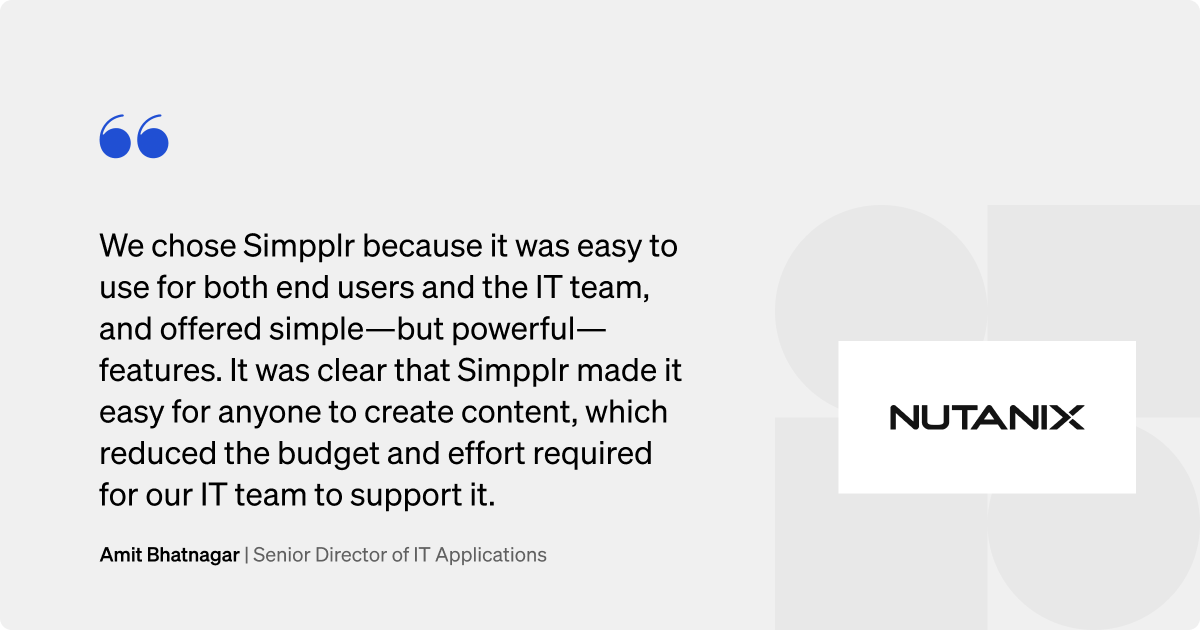
Related: Nutanix powers engagement with intranet innovation
Educational intranet portals
And let’s not forget educational intranet portals. Colleges and universities have long turned to intranets for many uses, from course registration to library searches and downloads. But when professional education meets big business, the application of a modern intranet portal can truly shine.
Coursera case study: Staying connected during hypergrowth:
When Coursera implemented Simpplr’s modern intranet platform, it saw a remarkable 90% employee adoption rate right off the bat. A recent podcast episode features an interview with Guido Ditto, Senior Manager of internal communications and employer brand at Coursera.
Guido, who previously led creative strategy at New York University, works with Coursera executives and teams to inform, engage, and connect colleagues around the world. Since joining the company in 2019, he has optimized information sharing with the new intranet, helped employees stay aligned with the company’s lofty mission during hypergrowth, supported the company’s transition to remote work, and led comms during Coursera’s IPO. Listen to the podcast here.
How to implement an intranet portal
The key decision in how to implement an intranet portal is whether your company should purchase a third-party intranet solution or attempt to build one from scratch. For most companies, purchasing the software provides a better ROI, especially given today’s highly specialized solutions that include features like:
- Auto-governance for content maintenance
- AI-powered search functionality
- Employee listening and data analysis
- Powerful integrations to popular tools
- Even AI virtual assistants
Building these from scratch involves more technical knowledge, development time, and maintenance resources than most organizations want to invest in continuous intranet sprints, builds, ticket responses, and so on. Instead, the better ROI comes from buying the software and contracting with a vendor that specializes in constantly developing and maintaining a state-of-the-art intranet platform.
Related: Simpplr drives 283% ROI: Forrester total economic impact study
Intranet portals: Get organized and engage your employees
Using intranet portals can greatly improve organization and employee engagement within a company. Once you know whether you’re building or buying your intranet, the next step is to plan your intranet portal implementation strategy. If you’re building your own intranet, be prepared for a long process. If you’re buying your intranet, implementation will be much faster. In that case, you can skip ahead and start planning your content.
Essentials for launching a successful intranet portal
Staging an exceptional intranet launch is vital for its success and future adoption. This involves strategic planning as well as incorporating certain essential elements—including great content! The following top 10 essential types of content are paramount for a successful intranet launch.
- Company policies, official documents and forms
- Company strategy and goals
- Values and corporate social responsibility (CSR)
- Digital assets and brand center
- Product and services information
- Information about different locations
- New hire welcome information
- HR information
- Task and process information
- How to use the intranet and other software
Related: 10 types of essential intranet content + examples
What are the top best practices for a successful intranet project?
Implementing a successful intranet project requires careful planning and adherence to best practices. This includes clearly defining your objectives, encouraging user engagement, ensuring ease of use, and intuitive navigation, among others. Understanding and implementing these practices can significantly enhance the success rate of your intranet project. If you’d like to learn more, you can read our post on “Intranet governance: Best practices, roles & strategy.”
Conclusion: Why use an intranet portal
In today’s era of digital transformation, an intranet portal is not a luxury but a necessity—especially for a widely distributed workforce. Employees want to see the value in their work. They want to connect with each other. They want to spend less time on routine, mundane tasks and more time on strategy.
Intranet portals accomplish all this and more, maximizing employee engagement, efficiency, and productivity.
Implement an intranet portal your employees will love
Considering an intranet platform for your business? See what a modern intranet can do when linked to an AI Virtual Assistant, or request a live demo with a product specialist.

Watch a 5-minute demo
See how the Simpplr employee experience platform connects, engages and empowers your workforce.
- #1 Leader in the Gartner Magic Quadrant™
- 90%+ Employee adoption rate







